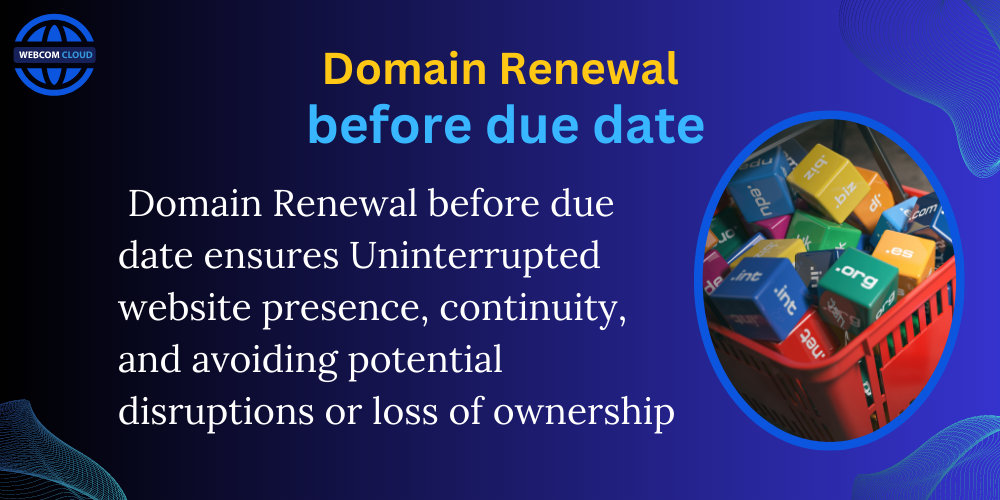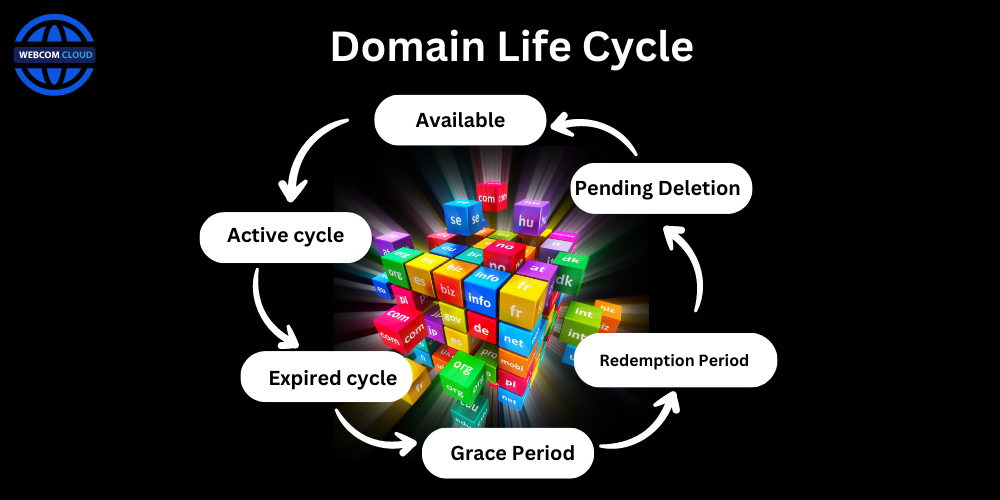Domain Life Cycle
Domain Life Cycle
Explore the dynamic world of the domain life cycle, unraveling its stages from registration to expiration, shaping the digital landscape.
Domain life cycle has the following stages
Available
When a domain is in the availability stage, As a result, the domain is available for someone / organization to register. You can register your domain through a domain registrar. Therefore You can proceed and register your domain through our website
Active cycle:
A t this stage the domain is already registered and it’s functional. A domain can be registered at a minimum period of 1 year and a maximum period of 10 years. During this period a domain is renewable every year. At this stage you can transfer your domain to another registrar.
Expired cycle
If renewal of an active domain does not take place therefore it enters into expired stage. During this period the domain can’t work and any website under the domain isn’t accessible and the emails stops working. The website gets a replacement with a page indicating the domain has expired. To make an expired domain active the domain owner must renew it. If Domain renewal can take place if it hasn’t entered the redemption period. If a domain isn’t renewed by the domain owner it can be registered by a third party.
Pending deletion
In case where the renewal of the domain does not take place renewed during the expired and redemption phase a domain goes to pending deletion stage. A domain remain at this stage for up to five days. And the domain is back to availability phase, the domain is available for registration.
Redemption cycle
A domain enters to redemption phase if 45 days after expiry its renewal does not take place. The period It varies depending on the domain extension. At this stage a domain renewal can take place but with application of additional charges, this depends with the registrar
Pending Deletion:
After the redemption period, if the domain is still not renewed, it enters the pending deletion stage. At this point, the domain cannot be redeemed, and it is marked for deletion by the domain registry. The domain remains in this state for a few days before being released back into the pool of available domains.
Release and Availability:
Once the pending deletion period is over, the domain is released, and it becomes available for registration again. During this time, anyone can register the domain on a first-come, first-served basis.
It’s essential to keep track of your domain’s expiration date and ensure timely renewal to avoid losing ownership and potential disruptions to your online presence. Different domain registrars might have slightly varying processes and grace periods in the domain life cycle, so it’s advisable to check with your specific registrar for precise details.
When to renew your domain depends on the registration period you selected when initially purchasing it. Most domains are registered for a specific period, commonly one year, but you can also choose longer registration periods, like two or more years. It’s essential to keep track of your domain’s expiration date to ensure uninterrupted service and avoid potential consequences of not renewing on time.
Consequences of not renewing your domain on time:
- Domain Suspension: If you fail to renew your domain before its expiration date, it may enter a grace period, during which it remains inactive. This period can last anywhere from a few days to a few weeks, depending on the domain registrar’s policies. During this time, your website and email associated with the domain may not function correctly.
- Domain Redemption Period: After the grace period, many domain registrars offer a redemption period (usually 30 days) during which you can still renew your domain. However, during this phase, the domain registrar may charge additional fees to restore the domain.
- Domain Deletion: If you do not renew your domain within the grace and redemption periods, the domain may be permanently deleted and become available for others to register. Once the domain is deleted, you will lose ownership, and someone else could potentially register it.
- Business Impact: Not renewing your domain on time can lead to significant disruptions for your website, email communication, and online presence. It can result in lost traffic, customers, and credibility for your business or personal brand.
To avoid these consequences, here are some best practices:
- Set Reminders: Make sure to set up reminders for your domain’s renewal date, so you are notified well in advance.
- Enable Auto-Renewal: Many domain registrars offer auto-renewal options. Enabling this feature ensures your domain is automatically renewed before it expires.
- Keep Contact Information Updated: Ensure your contact information with the domain registrar is accurate and up-to-date so that you receive renewal notifications.
- Register for Multiple Years: Consider registering your domain for multiple years to reduce the frequency of renewal tasks.
- Consider Domain Privacy Protection: If you have private registration for your domain (WHOIS privacy), ensure that the privacy protection service is set to auto-renew as well.
By being proactive and responsible with domain management, you can avoid the negative consequences of not renewing your domain on time.
Understanding the domain life cycle is crucial for effective online presence, from inception to renewal, shaping digital success seamlessly.
For more updates and insights, follow us on Twitter @webcomcloud.

